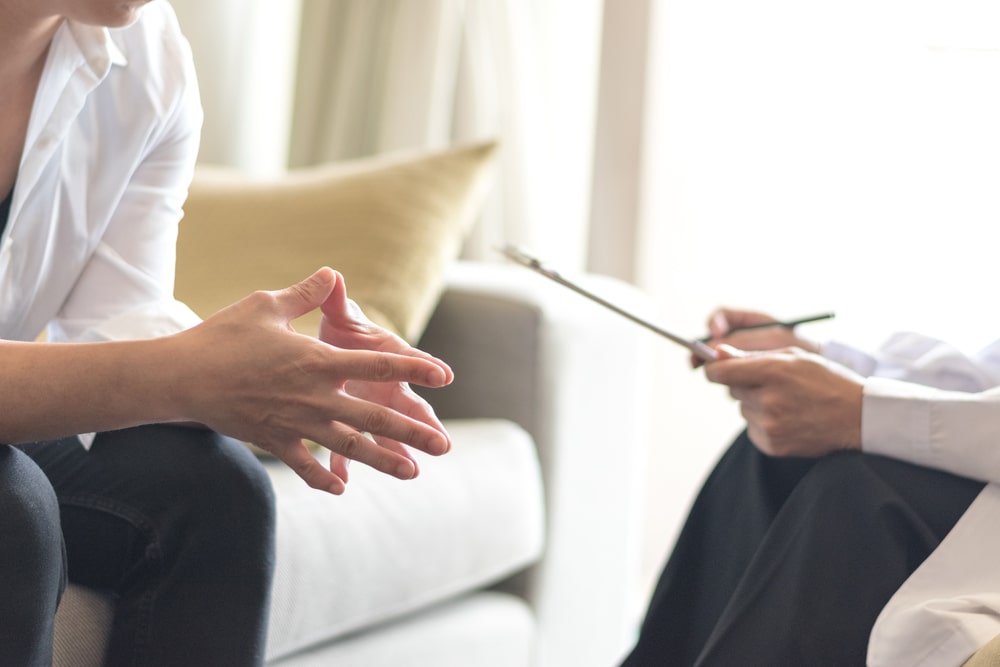NEW EXPERIENCES TO INSPIRE CHANGE
Experiential Therapy For Treating Addiction
David Kolb, the famous educational theorist, identified a four-stage cycle of learning that occurs with experiential therapy. Kolb writes that learning “is the process whereby knowledge is created through the transformation of experience,” and his learning cycle embodies this theory:
Stage one: Concrete experience (do it.)
Learners engage in a new experience.
Stage two: Reflective observation (talk about it.)
Learners actively observe and reflect before, during and after the experience.
Stage three: Abstract conceptualization (synthesize it.)
The reflection of the experience sparks a new idea or the reworking of an old idea or belief.
Stage four: Active experimentation (apply it.)
Learners apply their new or reworked idea in their lives and let it shape their perceptions of themselves and the world around them in positive ways.

According to Kolb, experiential therapy only works when all four stages are involved. An experience alone won’t create change unless it’s observed, conceptualized and applied. When it is, the experience becomes a catalyst for developing new concepts and skills that promote successful recovery.
According to the Substance Abuse and Mental Health Services Administration, a holistic approach to treatment offers the best chances of successful recovery. This approach involves both traditional and complementary therapies that promote whole-person healing.
Traditional therapies include cognitive-behavioral therapy, acceptance and commitment therapy and dialectical behavior therapy, which help you change negative thought and behavior patterns and cope better with negative emotions.
Complementary therapies include experiential therapies like art or music therapy, adventure therapy and horticultural therapy. These hands-on therapies are led by trained, licensed therapists who help individuals look at old issues in new ways; synthesize lessons learned and apply them to their lives; and develop greater self-awareness through observing how they respond while engaging in certain activities. Many experiential therapies use principles from cognitive-behavioral therapy and other traditional therapies to help create meaningful change.
Experiential therapies are fun and engaging, and they help improve retention in treatment.
Therapies Offered

Types of Experiential Therapy for Treating Addiction
High-quality treatment programs offer a variety of experiential therapies that provide opportunities for holistic healing. These are some of the most common experiential therapies used in addiction treatment programs.
ADVENTURE THERAPY
Adventure therapy takes place outdoors and involves a variety of activities like climbing, kayaking, hiking and zip-lining. The outdoor setting inspires hope and wellbeing and promotes personal growth and self-confidence. The activities stimulate emotional, cognitive and behavioral responses that connect to other areas of participants’ lives. Adventure therapy has been shown to:
• Improve decision-making skills
• Promote better communication and cooperation skills
• Help individuals develop trust
• Teach coping skills like tolerating stress and being okay with being uncomfortable
• Increase engagement in treatment
Music therapy involves making, listening to, moving to and analyzing music. According to a study published in the Journal of Addictions Nursing, music therapy reduces feelings of anxiety, depression and anger, and it’s associated with a stronger motivation to change.5 Music therapy also helps participants:
• Improve communication skills
• Work through complex emotions and issues
• Find common ground with others
• Create meaningful personal change
ART THERAPY
During art therapy, participants create, view and talk about art. Through creative self-expression, they work through complex emotions and experiences and increase self-awareness. Other benefits of art therapy, according to an article published in the American Journal of Health, include:
• Reduced denial
• Healing of emotional wounds
• Increased engagement in treatment and recovery
• Reduced stress and feelings of shame
• Healthier thought and behavior patterns
MINDFULNESS MEDITATION
Mindfulness meditation is a practice that involves sitting quietly and focusing on the breath, allowing thoughts to move through the brain without reaction or judgment. Regular meditation improves self-awareness and mindfulness, and it promotes making better choices. According to the journalSubstance Abuse. mindfulness meditation is highly effective for helping to treat addiction. Its benefits include:
• Helping practitioners respond better to external events
• Promoting feelings of inner calm and peace
• Pain relief
• Better decision-making skills
• Better emotional regulation
• Less anxiety, stress and fear
Yoga is a mindfulness experiential therapy that combines controlled breathing and movement. Led by a certified yoga instructor, yoga often incorporates inspirational teachings and meditation techniques to help participants improve their self- and body awareness .and dwell in the present moment without concerns of the past or future. Yoga is widely used in addiction treatment programs and helps people:
• Improve mindfulness
• Reduce cravings
• Reduce stress and improve the body’s stress response
• Reduce symptoms of PTSD
• Reduce depression and anxiety
• Heal emotional wounds, especially for trauma survivors
SAFE HARBOR TREATMENT CENTER
Experiential Therapy Promotes Successful Recovery from Addiction
A treatment program that includes a range of experiential therapies along with traditional programming offers better outcomes. Experiential therapy enhances whole-person healing and increases feelings of wellbeing. Through a variety of experiential therapies, people in treatment increase their self-awareness and make important connections between their thoughts, emotions and behaviors for better social and emotional functioning.

